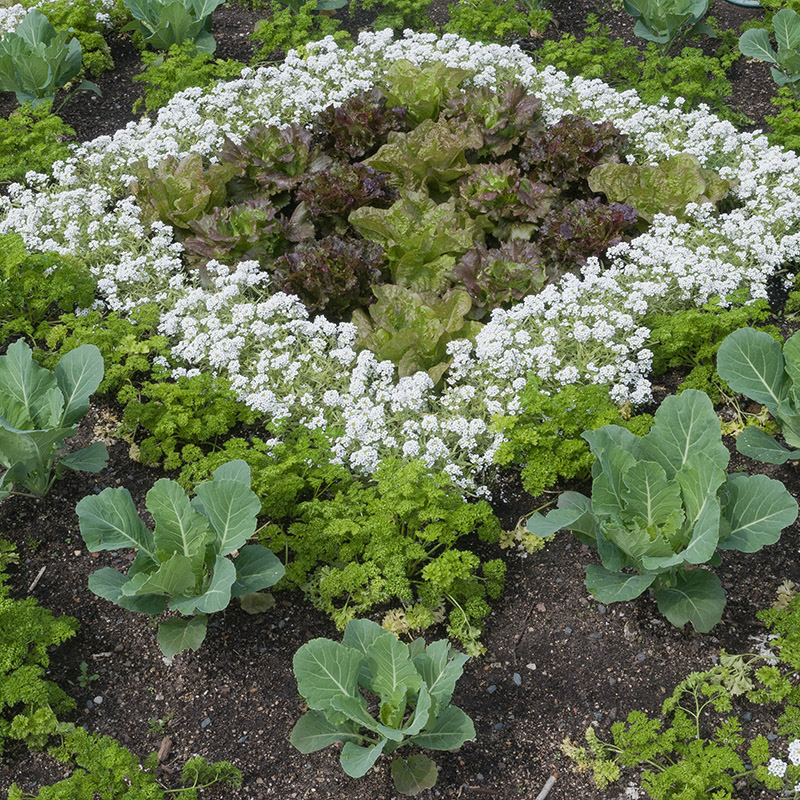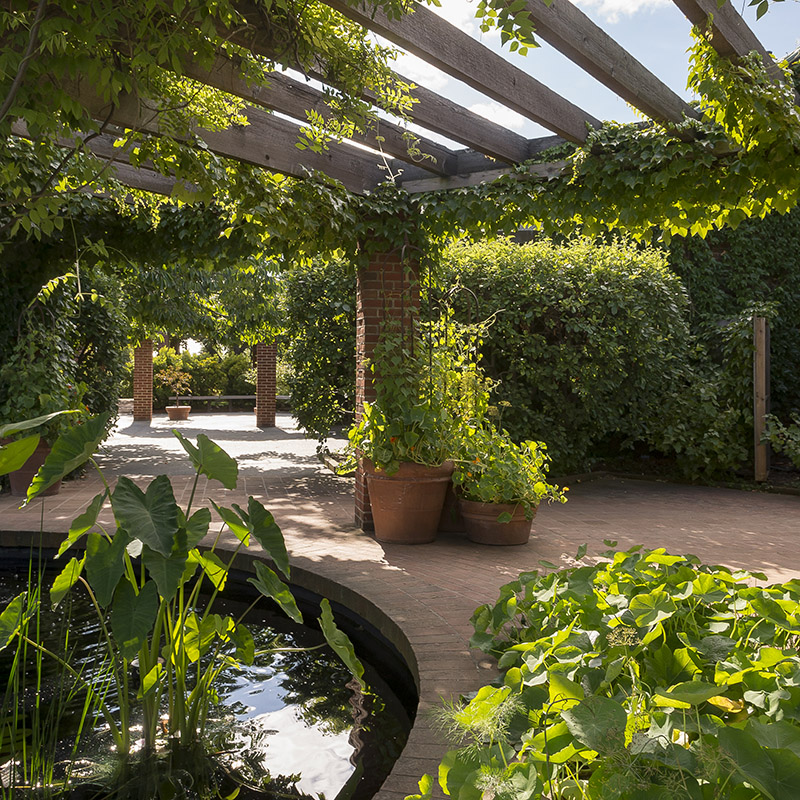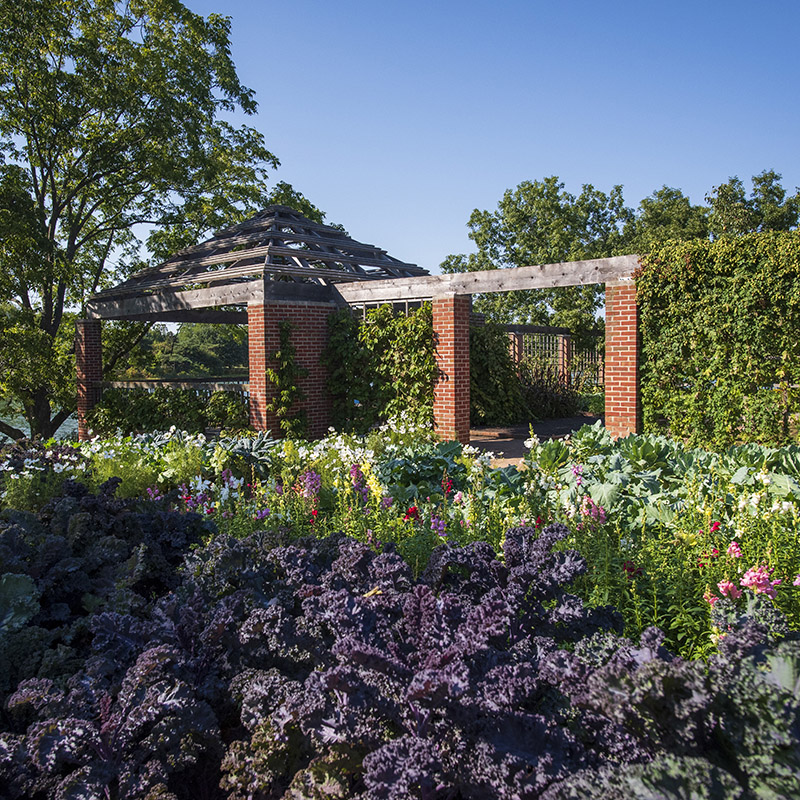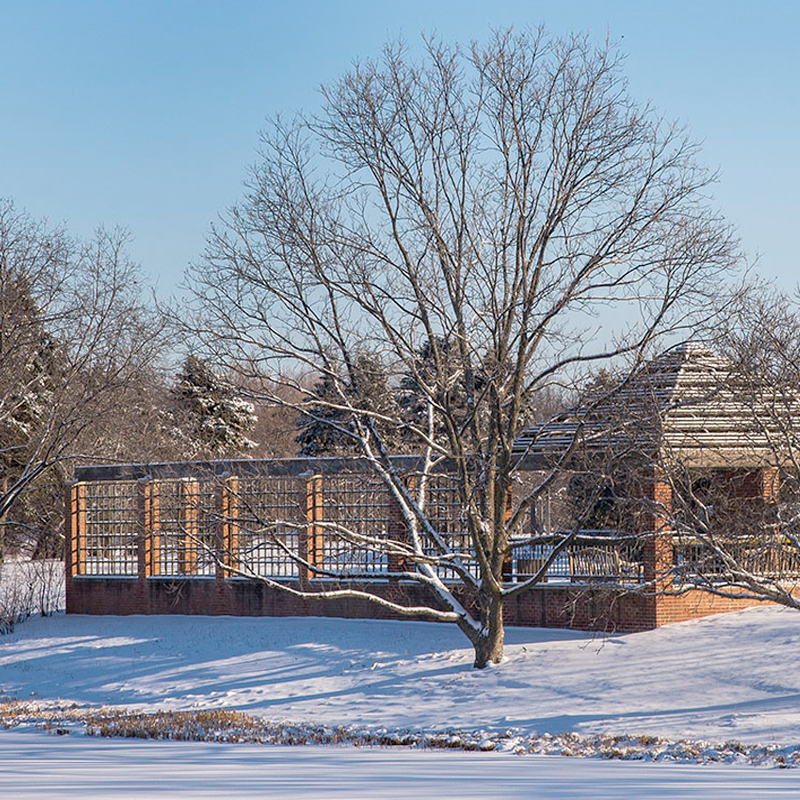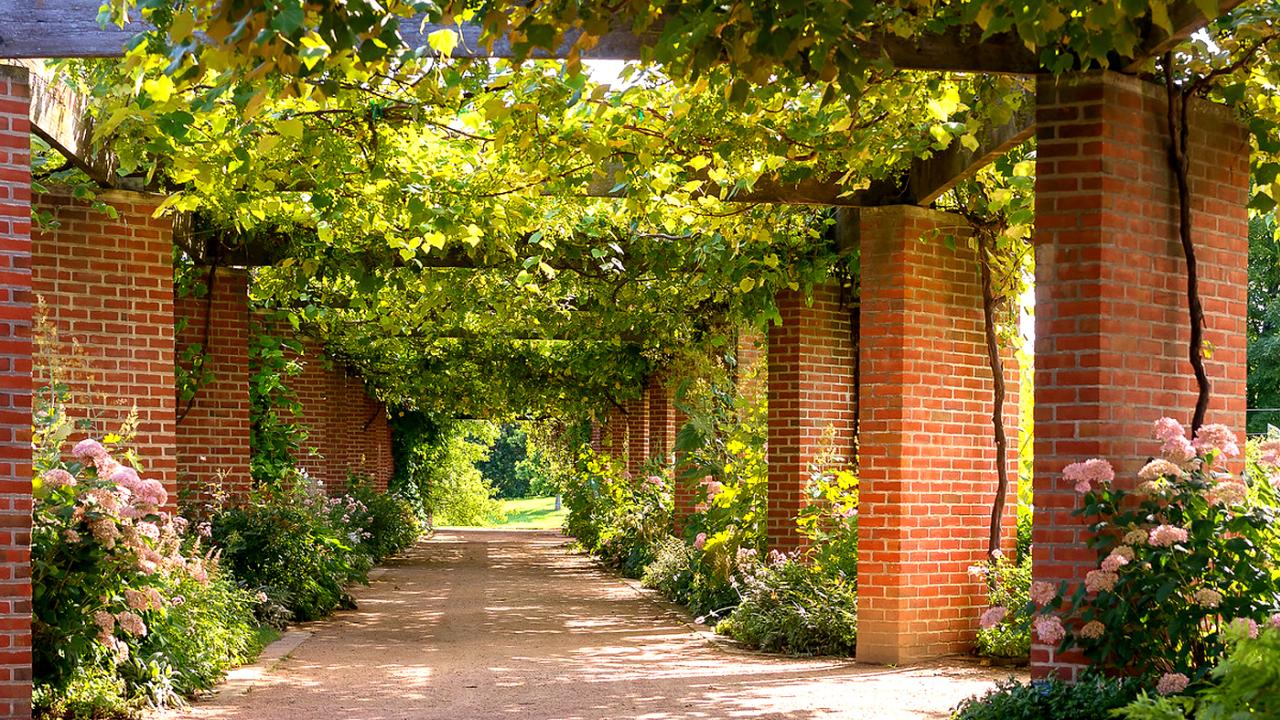

Regenstein Fruit & Vegetable Garden
The Regenstein Fruit & Vegetable Garden is one of the biggest and best of its kind in the Midwest. This 4-acre working garden shows you how to grow edible plants in a setting designed to surprise and delight.
You might have a little pot of basil growing on your kitchen windowsill or a raised bed with staked tomato plants and other crops—we’re here to help get you started or talk you through whatever you’re growing.
A place for inspiration
Look for something new from March through November—maybe a window box filled with the main ingredients for English pea soup, including edible flowers; or a fish pepper, an African American heirloom crop from the turn of the century, or…
This is a place for the curious, for anyone who wants to learn and reflect or just take a walk in a lakeside apple orchard. Here, people of all ages connect with nature through a close look at where our food comes from.
What do you grow and what methods do you use?
We grow more than 700 types of berries, fruit, vegetables, and herbs that flourish in Chicago-area gardens and show you the most sustainable way to grow them. We use organic growing methods.
What do you do with all that produce?
As part of our commitment to the community, we donate about 4,800 pounds of produce a year—figs, golden raspberries, eggplant, and more—to the nonprofit Roberti Community House in Waukegan.
What kinds of events and activities do you have?
We’d love to see you for family drop-in activities on summer weekends, the Garden Chef series in our open-air amphitheater, our Plant Giveaways, and other special events. One of our goals is to show you how to use harvested plants through cooking demonstrations and festival weekends.
How is this garden different from a farm?
One way we’re different is in our use of techniques to bring order and organization to the plant material and maximize yield in small spaces—while keeping an eye out for beauty beyond traditional row cropping.
We use architectural hardscape such as trellises, arbors, brick and stone walls, and a multi-tiered arrangement of garden beds at different levels. We also use interplanting—a mixture of plants, herbs, flowers, and vegetables in the same growing space—and make sure that something is blooming throughout the growing season. By design, we’re a teaching garden, meant to encourage you to try new plants and growing methods yourself.
Is there anything to see for people who aren’t interested in growing crops?
Sure! Take a walk to our grape arbor, for instance, twined with Concord grape vines, with blooms planted at the base of its pillars. You can find trellises covered with kiwi vine and ivy-covered red brick walls. Look for our use of espalier, the art of training and trimming fruit trees to grow two dimensionally. Against our brick walls, you’ll find espaliered fruit trees including Japanese plum, Italian prune, and Lodi apple.
